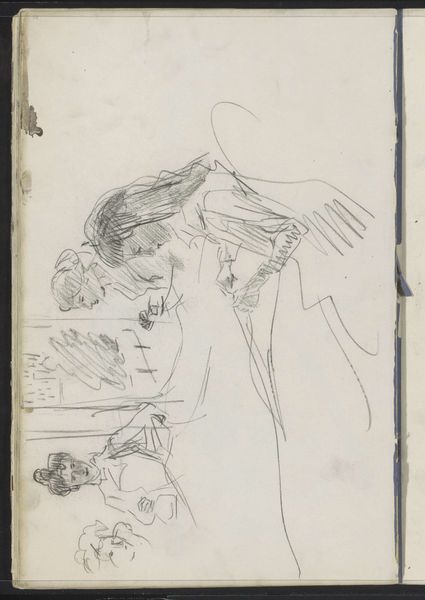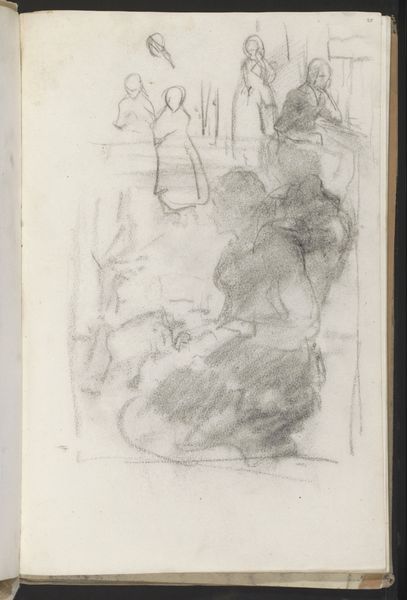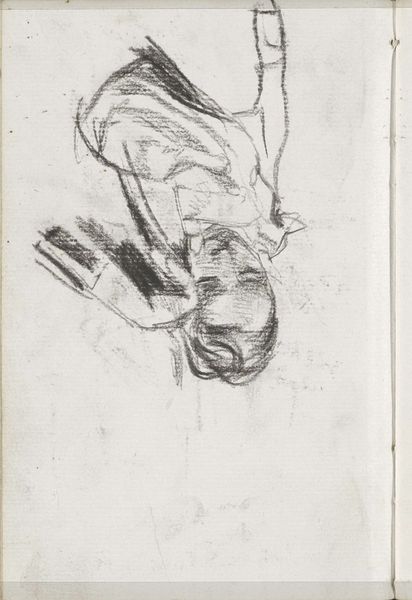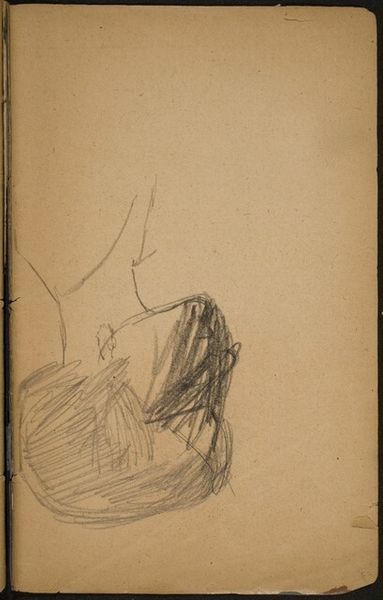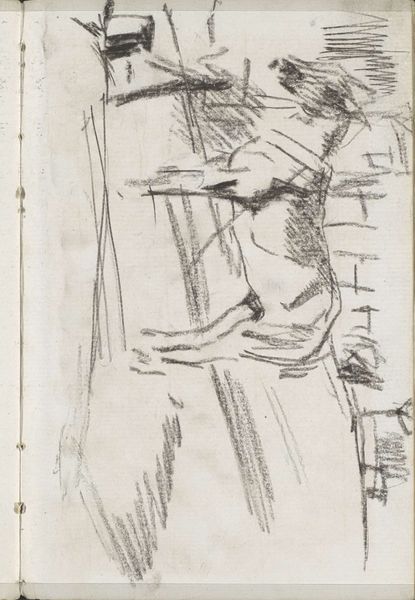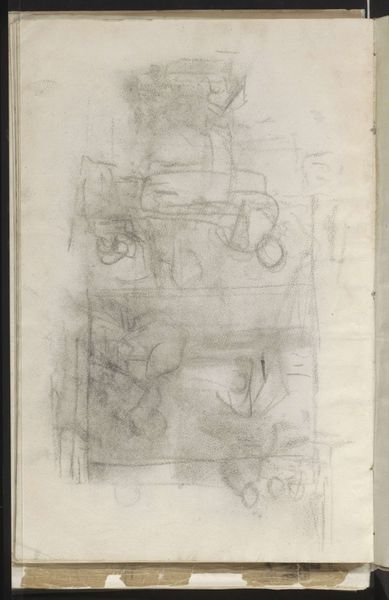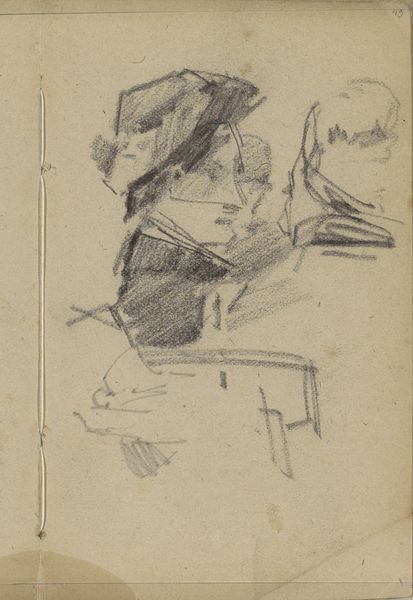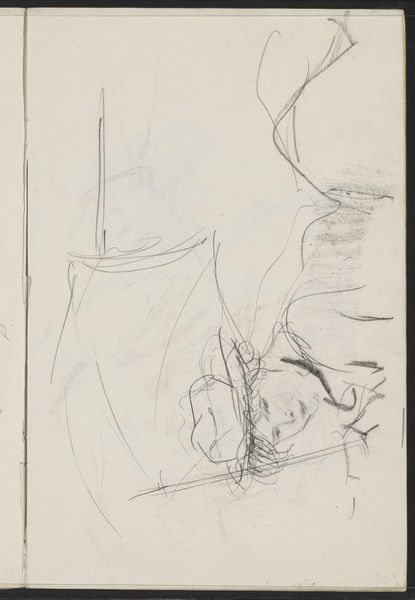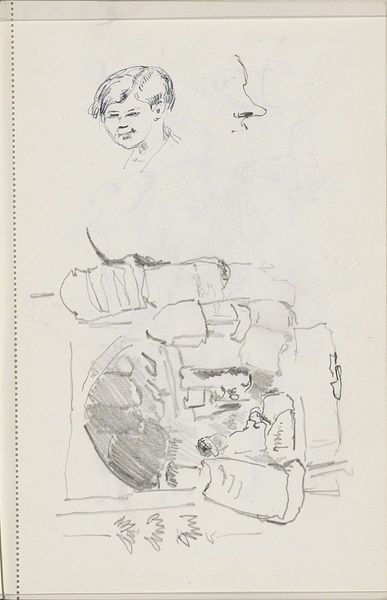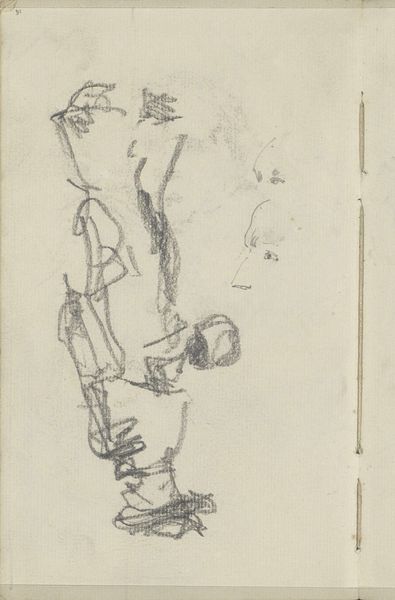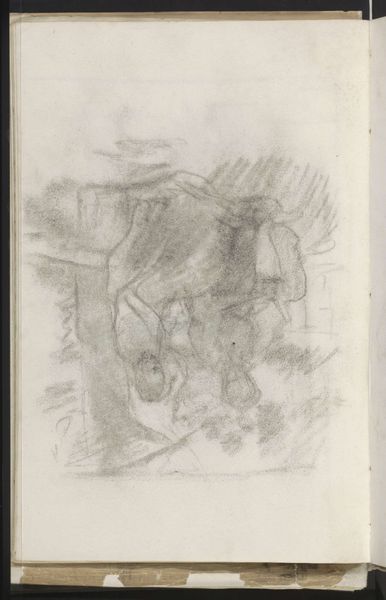
drawing, pencil
#
portrait
#
drawing
#
figuration
#
pencil
#
genre-painting
#
realism
Copyright: Rijks Museum: Open Domain
Editor: This intriguing pencil drawing, "Twee figuren zittend aan een lege tafel" by Jozef Israëls, dating from around 1855 to 1859, captures two figures at a table. The starkness of the composition makes me wonder, what is the story behind this scene? How do you interpret this work? Curator: What I notice is the bareness, literally the exposed quality of the pencil on paper. Look closely at the visible labor. It appears almost industrial with the minimal refinement – that makes me wonder if we should focus less on the potential ‘narrative’ and more on the process that makes this work so modern, even if on a traditional sketchpad. Think about what pencils represent: mass production. This drawing underscores the changing relationship between artistic skill and accessibility of artistic tools. What does it say about art when its means are so readily available? Editor: That’s a very interesting perspective! I was so caught up in trying to imagine their conversation, that I missed thinking about the actual materials. Curator: Exactly. This isn't about lofty themes necessarily. It could be more about highlighting the democratization of art production inherent in widely accessible materials. What was previously a luxury became commonplace during this period. Editor: So you're suggesting the artwork might be a commentary on shifting social dynamics within art creation itself? Curator: Precisely. The ease of access transforms art and potentially, the role of the artist. Editor: I hadn’t considered that before, how the accessibility of materials could become the point of the piece. Curator: Seeing the materials in their socio-historical context can open up fresh avenues of analysis, don't you agree? Editor: I do! It adds another layer of understanding to what at first glance appears to be a simple sketch.
Comments
No comments
Be the first to comment and join the conversation on the ultimate creative platform.
